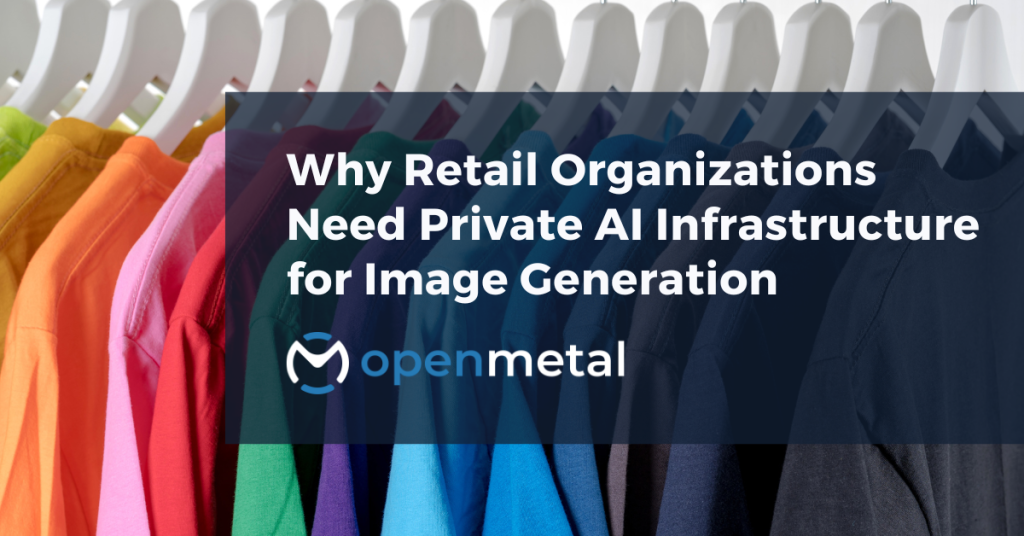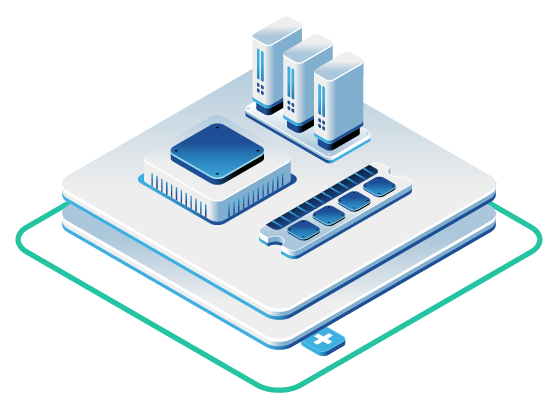
Ready to explore private AI infrastructure for your organization?
The next step is understanding the technical implementation—from hardware requirements to deployment architecture—that makes this transformation possible.
As generative AI transforms creative workflows, retail brands are racing to produce product mockups, ad visuals, and concept art with unprecedented speed. Jane, a (fictional) retail CTO, faces a dilemma: her design teams want the agility of AI image generation, but public tools like Midjourney or DALL·E raise concerns around data security, intellectual property (IP) rights, and unpredictable costs. It’s no surprise that 58% of retailers are already leveraging generative AI for content creation to scale marketing outputs. The challenge is how to adopt these capabilities safely and cost-effectively.
The Hidden Risks of Public AI Services
When Jane evaluates third-party AI image APIs, the immediate appeal is obvious: stunning visuals generated on demand with minimal setup. However, the hidden costs—both financial and strategic—keep her awake at night.
The IP Exposure Problem
Your proprietary product images, unreleased designs, and campaign concepts represent significant competitive advantages. When you send these materials to external AI services, you’re essentially sharing your crown jewels with a third party. Many providers’ Terms of Service include broad language about using customer-generated content to improve their models—a completely unacceptable risk for proprietary brand assets.
Consider what happens when your upcoming holiday collection designs leave your secure environment and enter a vendor’s cloud. Even if they promise not to use your data, you’ve lost control over how that information is stored, who has access to it, and what happens if there’s a breach.
The Compliance and Privacy Challenge
Data privacy regulations continue to tighten globally. Any sensitive imagery—unreleased product designs, campaign creatives, or customer photos—that leaves your secure environment can violate internal policies or regulatory requirements. You need to be able to guarantee where your data is processed and who has access to it.
The Black Box Transparency Issue
Public image generators operate as black boxes. You don’t know what training data was used, how content filters work, or whether the model version will change overnight. This lack of transparency makes it nearly impossible to explain or reproduce specific results for compliance audits or creative consistency.
The Cost Spiral Reality
Pay-per-use APIs appear affordable at small scale, but costs can skyrocket with heavy use. OpenAI’s DALL-E 3 charges approximately $0.04 for medium quality images and $0.17 for high quality, which seems reasonable until you’re generating thousands of images monthly for A/B testing, seasonal campaigns, and concept development.
The Legal Landscape: Why Timing Matters
Recent legal developments underscore the importance of controlling your AI infrastructure. Getty Images’ landmark copyright lawsuit against Stability AI, which went to trial in June 2025, highlights the legal uncertainties surrounding AI training data and intellectual property rights. Getty alleges Stable Diffusion was trained on 12 million Getty photos without permission, while Stability AI contends the case threatens innovation.
This and several other lawsuits in the US and Europe underscore a reality: companies must carefully guard their IP when using generative AI. An in-house deployment avoids uncertainty over who owns or can see your prompts and outputs—a critical advantage as the legal landscape evolves.
Cost Analysis: Private Infrastructure vs. Public APIs
One of Jane’s key concerns is cost: will running your own GPUs actually save money? Let’s compare generating roughly 50,000 images monthly using different approaches:
Solution | Monthly Cost | Cost per Image | Throughput per $1 | Notes |
| Private GPU Cloud (1× H100) | ~$3,000 fixed | ~$0.06 (drops to ~$0.003 at max utilization) | ~17-333 images per $1 | Fixed cost, best for steady volumes >15k images/month |
| Stability AI API | ~$150 | ~$0.003 | ~333 images per $1 | Scales linearly—500k images = $1,500 |
| OpenAI DALL·E 3 (Medium) | ~$2,000 | ~$0.04 | ~25 images per $1 | Higher quality costs $0.17 each |
Economic Analysis
If Jane’s organization only needs a few thousand images monthly, public services might be cost-effective. But the equation flips as usage grows. With fixed-cost private infrastructure, generating more images doesn’t increase your bill—you maximize ROI on that hardware investment.
Key Economic Threshold: If you anticipate running GPUs at over 70% utilization during campaign periods, private infrastructure becomes more economical and certainly more predictable.
ROI Analysis: 12-Month Financial Impact
For a mid-size retailer generating 50,000 images monthly (600,000 annually):
| Solution | Annual Cost | Performance | Business Impact |
| Private GPU Cloud | $36,000 | Consistent 1.5s per image | Complete IP control, compliance ready |
| OpenAI DALL-E 3 (Medium) | $24,000 | Variable latency | Data exposure risk, usage restrictions |
| OpenAI DALL-E 3 (High) | $102,000 | Variable latency | Premium quality, highest costs |
| Stability AI API | $1,800 | Variable latency | Lowest cost, data leaves environment |
Additional Business Value Beyond Cost
- IP Protection: Invaluable for competitive advantage and brand security
- Compliance Readiness: Eliminates third-party data processing risks
- Performance Consistency: Guaranteed generation times without variability
- Creative Freedom: Unlimited iterations within hardware capacity
Real-World Use Cases for Private AI Infrastructure
Seasonal Packaging Prototypes
Generate holiday-themed package designs or limited-edition product labels instantly. Instead of hiring external designers for every concept, your in-house model creates dozens of seasonal packaging mockups for brainstorming. Teams iterate on winter motifs or summer colors quickly while keeping early-stage ideas confidential.
A/B Testing Ad Concepts
Marketing teams can rapidly generate variations of ad concepts—different backgrounds, models, or art styles—without costly photoshoots. A fashion retailer could create several AI-generated scenes of a new clothing line (urban street vs. studio vs. nature backdrop) and run pilot campaigns to gather engagement data.
Concept Art for Collections
Before physical samples are made, design teams need to visualize new collections. AI can act as a digital concept artist, generating lookbooks based on text prompts like “Spring collection living room set, Scandinavian style, pastel colors.” And here, tools like a background changer allow designers to quickly test how products appear in different settings, enhancing creative exploration. These renders help teams evaluate ideas early while keeping experimental concepts secret.
Data Sovereignty and Compliance Benefits
Enterprise Security Requirements
Private infrastructure provides multiple security layers specifically designed for sensitive AI workloads:
- Hardware-Level Isolation: Dedicated GPU nodes with no multi-tenancy
- Network Segmentation: Private VLANs ensuring traffic isolation
- Access Controls: Integration with enterprise identity management
- Encryption: Data encrypted at rest and in transit
- Audit Capabilities: Complete logging of all AI generation activities
Compliance Framework Support
- SOC 2 Type II infrastructure
- GDPR data residency requirements
- HIPAA-ready configurations for healthcare retail
- PCI DSS compliance for payment-related imagery
Audit Trail Capabilities
When you control the entire stack, you can log every generation with complete reproducibility. Given the same prompt and random seed, the model produces identical results—invaluable for compliance audits and quality assurance.
Third-Party API vs. Private Cloud Comparison
| Factor | Third-Party API | Private Infrastructure |
| IP Risk | Provider may claim partial rights; unclear ownership with strict TOS | Full IP ownership; all prompts and assets stay internal |
| Data Privacy | Sensitive data leaves your environment; risk of leaks or misuse | Data stays private on dedicated cloud; you control access and compliance |
| Cost Scalability | Usage-based fees scale unpredictably; costs spiral with growth | Fixed monthly cost; unlimited images up to hardware capacity |
| Transparency | Black-box model; limited insight into updates or biases | Full control; use known model versions for consistent results |
ROI Beyond Cost Savings
Creative Freedom
Teams report increased experimentation when generation costs become predictable. Without per-image charges, designers explore more concepts and iterate more freely.
Brand Consistency
Fine-tuned models produce more on-brand outputs, reducing the creative review cycle and speeding time-to-market for campaigns.
Competitive Advantage
While competitors rely on the same public models available to everyone, your custom-tuned, privately-hosted models create unique visual styles that differentiate your brand.
Taking Action: Your Next Steps
The evidence is clear: retail organizations that control their AI infrastructure gain significant competitive advantages in creativity, cost management, and data security. The question isn’t whether to adopt AI—it’s whether you’ll maintain control over your most valuable creative assets.
Immediate Actions for Business Leaders:
- Assess Your Current AI Spend: Calculate monthly costs across all public AI services, including hidden costs of data exposure and workflow delays
- Build Your Business Case: Use the ROI frameworks and security benefits outlined here to justify private AI infrastructure investment to stakeholders
- Plan Your Migration Strategy: Start with highest-value use cases—seasonal campaigns, A/B testing, or concept development—where data control and cost predictability matter most
- Evaluate Technical Requirements: Work with your IT team to assess infrastructure needs and deployment options
Don’t let another quarter pass sending your proprietary designs and creative concepts to public AI services. The retail organizations that act now to establish private AI infrastructure will maintain their competitive edge while others struggle with escalating costs and data security concerns.
GPU Servers & Clusters Catalog
Questions? Schedule a meeting or start a chat.
Note: We would like to make this article as comprehensive and accurate and possible. If you have any suggestions for improvements or additions please feel free to send them over to marketing@openmetal.io.


































